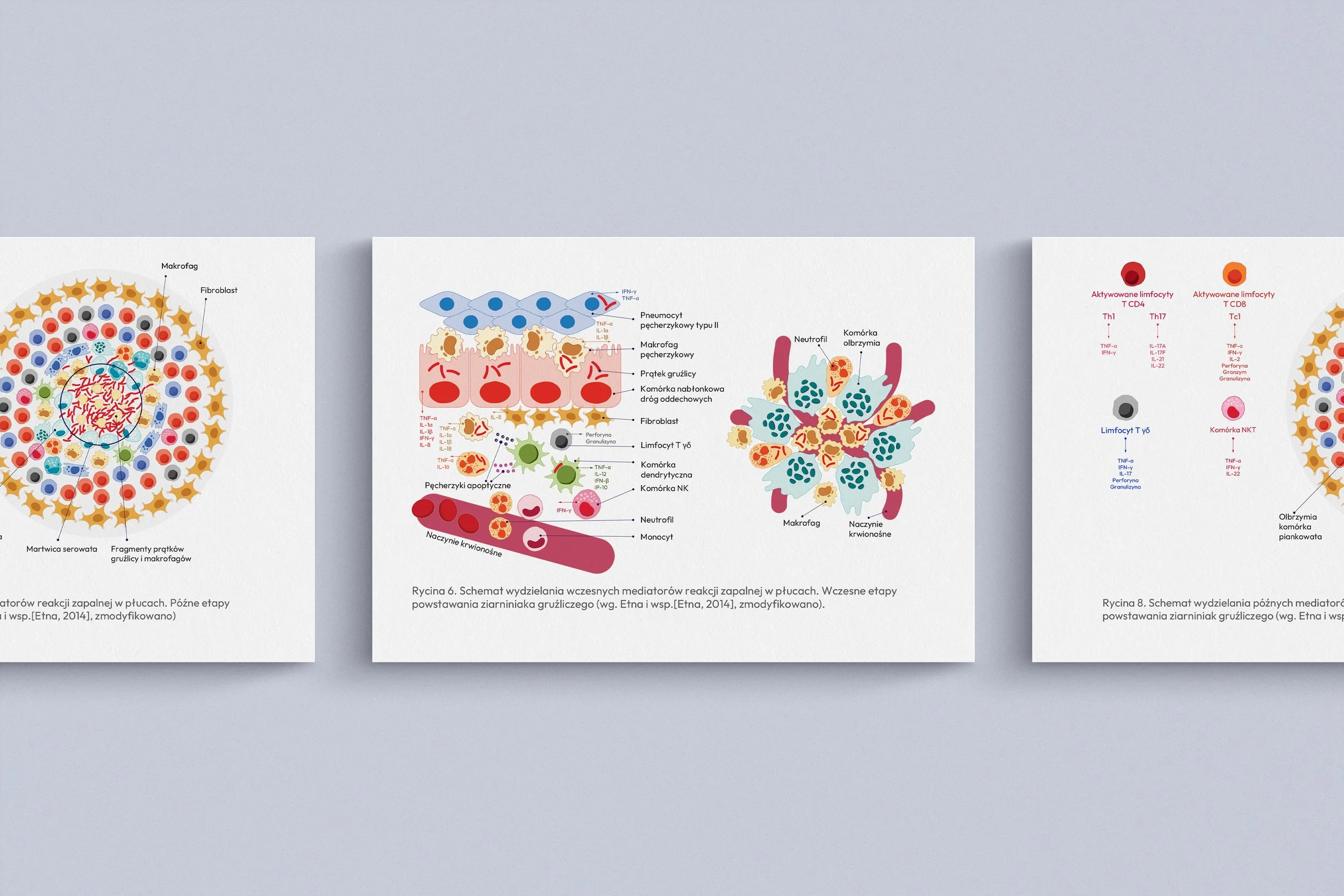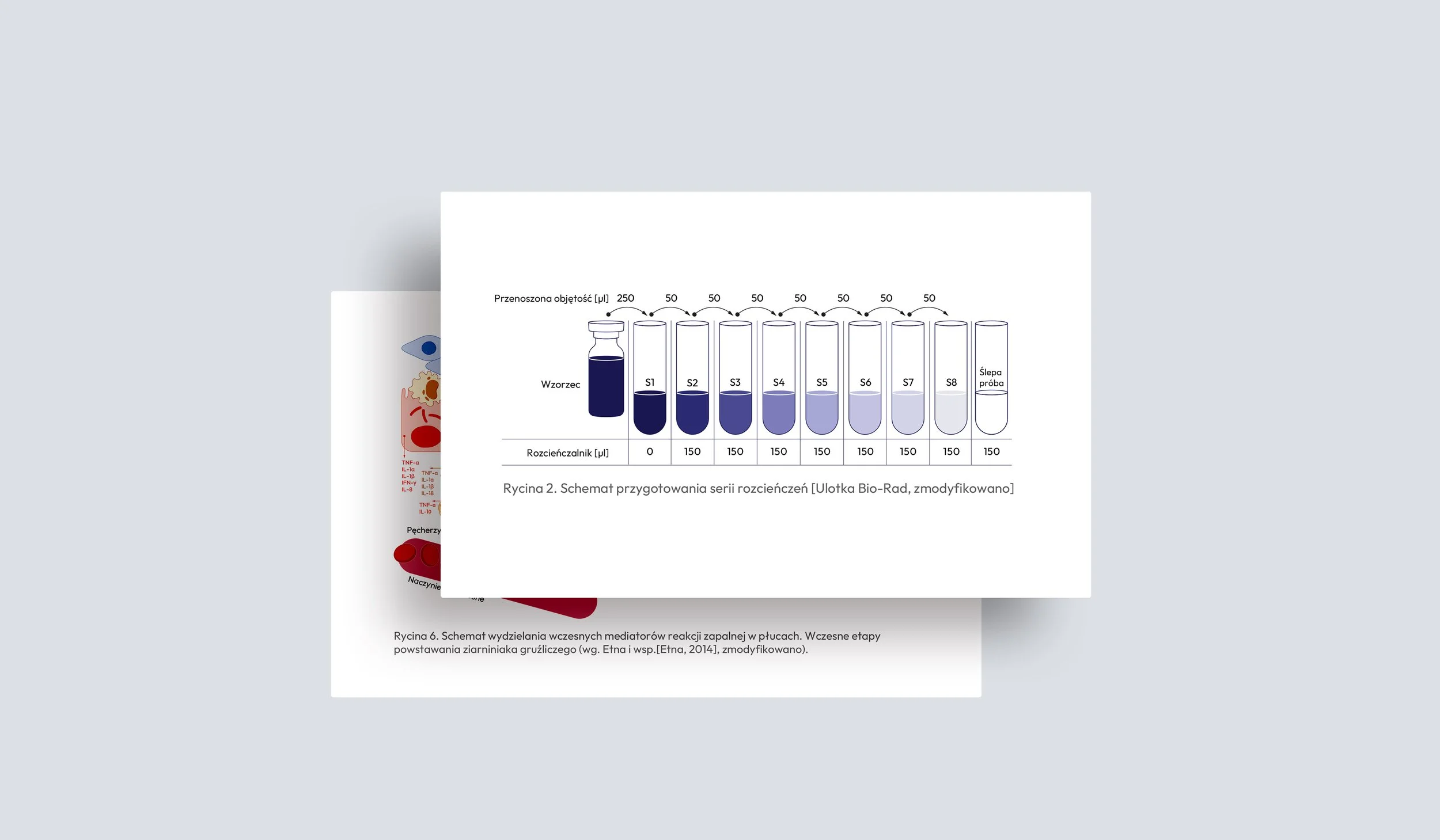Now and then comes a project that has a true mission.
I was approached by a remarkable lady to help her with illustrating a PhD thesis on the late stages of tuberculosis. One of the biggest draws of projects like this is the fact that I am taking a tiny part in the quest for better health. The second biggest draw is the glimpse into a world to which I would not have access otherwise.
The research on the research. This is where things get serious because accuracy and the ability
to translate a complex idea into a legible illustration are a must. Before a pen touched the paper,
I spent some quality time getting to know Giant cells, Fibroblasts and Neutrophils, just to name a few. My research phase included reading some parts of the dissertation and browsing lab illustrations and microscope images. From the get-go, I knew this project was not about the design – it was all about delivering scientific information in the most efficient and clear fashion possible.
Infographics for a PhD thesis on the late stages of tuberculosis.
The design.
Because it is a particular and highly specialised niche, it means I have to make sure that the artistic interpretation and flair are mostly tucked away. This is all about getting to the point and presenting the information in a neat and aesthetically pleasing way. If you ever looked for one, this is one of the best examples of where the design should be invisible and consistency rules supreme.
The biggest challenge of medical illustrations is combining different levels of information and still making it clear who is who and what is going on between them. The process started with one illustration to not only set the style but to make sure I understood the relationship between elements. I had to think ahead so that the style could be replicated and used for all illustrations.
Sources:
Kleinnijenhuis J, Oosting M, Joosten LA, Netea MG, Van Crevel R. Innate immune recognition of Mycobacterium tuberculosis. Clin Dev Immunol. 2011;2011:405310. doi: 10.1155/2011/405310. Epub 2011 Apr 7. PMID: 21603213; PMCID: PMC3095423.
Etna MP, Giacomini E, Severa M, Coccia EM. Pro- and anti-inflammatory cytokines in tuberculosis: a two-edged sword in TB pathogenesis. Semin Immunol. 2014 Dec;26(6):543-51. doi: 10.1016/j.smim.2014.09.011. Epub 2014 Nov 8. PMID: 25453229.
Ndlovu H, Marakalala MJ. Granulomas and Inflammation: Host-Directed Therapies for Tuberculosis. Front Immunol. 2016 Oct 24;7:434. doi: 10.3389/fimmu.2016.00434. PMID: 27822210; PMCID: PMC5075764.
Gruźlica i Choroby Układu Oddechowego w Polsce w 2023 r. red. Maria Korzeniewska-Koseła. Instytut Gruźlicy i Chorób Płuc, Warszawa 2024.
https://www.quantiferon.com/wp-content/uploads/2018/09/QFT-Plus-ELISA-IFU-L1095849-R04.pdf (dostęp 01.08.2024)
https://www.biorad.com/webroot/web/pdf/lsr/literature/10000112540.pdf (dostęp 11.03.2024)








